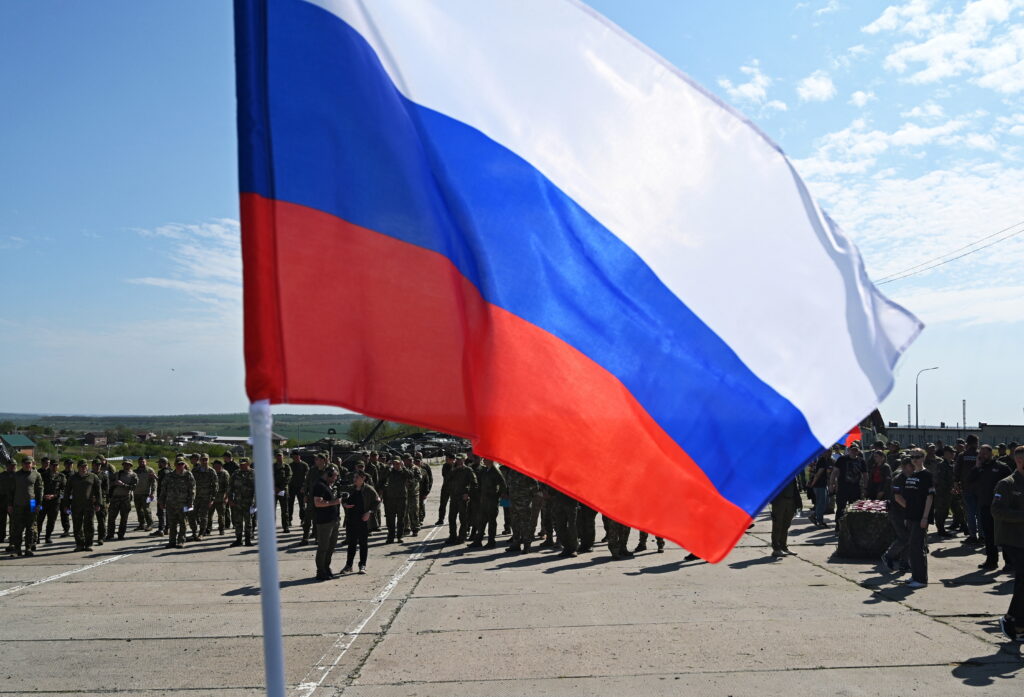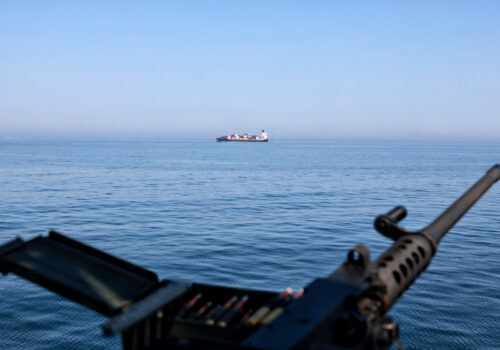The war in Ukraine has many fronts—but one of the most insidious runs deep inside Russia itself: through detention centers, migration offices, and construction sites, where thousands of Central Asian migrants are being recruited—or coerced—into dying for a war they never chose.
According to Hochu Zhit (“I Want to Live”), a project by Ukraine’s Defense Ministry, more than three thousand Central Asians are now serving in Russia’s military. The project’s finding is no revelation for those like myself who have tracked this issue closely for some time. Rather, it is a grim confirmation of what we have long seen in pieces: body bags quietly sent home, pleas for help from the trenches, and recruitment videos shot behind barbed wire.
Russia primarily draws on domestic recruits, especially ethnic minorities from its own regions. However, if figures from Hochu Zhit are accurate, Central Asians now represent the second-largest group of known foreign nationals fighting in Russia’s war in Ukraine—second only to the roughly eleven thousand North Korean troops, most of whom have reportedly vanished from the battlefield in recent weeks, following the reported deaths of nearly half that number in combat.
Russia’s disposable soldiers
The numbers recorded in the Hochu Zhit report are staggering:
- 1,110 Uzbek nationals enlisted; 109 confirmed killed.
- 931 Tajiks; 196 dead.
- 360 Kyrgyz citizens; 38 dead.
- 170 Turkmen; 27 dead.
These are not professional soldiers. They are more likely former cleaners, street sweepers, construction workers—undocumented migrants, often trapped in legal limbo, lured with false promises of fast-track Russian citizenship or pulled straight from prisons and detention centers.
Their legal vulnerability is the Kremlin’s most effective weapon. Nowhere is this more evident than at Moscow’s Sakharovo migration center—ground zero for recruitment efforts from Central Asia.
In September 2022, on the same day that the Duma passed a law fast-tracking citizenship in exchange for military service, Moscow Mayor Sergei Sobyanin launched a targeted enlistment campaign aimed at migrants.
In parallel, the Kremlin-linked Wagner Group—whose late leader Yevgeniy Prigozhin claimed in May 2023 that twenty thousand of its fighters, half of them convicted prisoners, were killed in the battle for Bakhmut—also reportedly recruited from Russia’s regions, using similar promises to entice new recruits.
Luring vulnerable Central Asians has long been a core part of this strategy. At the time of the law’s passage, Andrey Krasov, deputy chair of the Duma’s Defense Committee, framed it as a privilege, stating confidently: “A comparable number of Central Asians will want to serve, seeking citizenship or career advancement.”
What Russian authorities presented as a privilege quickly revealed itself to be a trap.
In May 2022, an Uzbek man from the Ferghana Valley appeared on camera in Luhansk wearing a Russian military uniform, stating that he had been recruited because of his prior service in Afghanistan. It was later revealed that he was paid just $590 a month under a three-month contract—only a fraction of the $4,000 monthly salary promised by Moscow’s street-level recruiters.
For him—and likely many others like him—the front line becomes a one-way ticket. By the time they arrive, it’s already too late to turn back. The promised pay rarely materializes, and most won’t live long enough to collect the money or the citizenship that they were offered.
A war built on the margins
There are an estimated 12 million-14 million migrant workers in Russia, and as many as 10.5 million are from Central Asia—a significant number of them undocumented and unprotected by labor or residency laws. It’s a legal gray zone, perfectly engineered for exploitation.
For Valentina Chupik, a Russian lawyer born in Uzbekistan, the pattern is painfully clear. “Labor migrants are treated as cannon fodder,” she told Radio Free Europe/Radio Liberty (RFE/RL) in September 2022. “It’s called voluntary service, but migrants know that refusing can mean deportation—or far worse.”
The human loss has been staggering. A June 3 report by the Center for Strategic and International Studies (CSIS) estimates that there nearly a million total Russian casualties in Ukraine, including as many as 250,000 deaths. No Russian or Soviet conflict since World War II has come close.
And yet, the Kremlin’s war machine grinds on. As the report demonstrates, the hidden strategy is clear: Spare the sons of the elite and conscript the invisible—prisoners, the rural poor, ethnic minorities, and foreign migrants with no voice and no leverage.
According to the CSIS report, Russian President Vladimir Putin views many of these recruits as expendable and politically safe. Central Asian migrants, stripped of rights and silenced by fear, fit that role with chilling precision.
A few on the other side
While it is rare, a handful of Central Asians have also joined the Armed Forces of Ukraine—not for promises of lucrative payments or citizenship, but, as they say, out of principle.
Zhasulan Dyuisembin, a Kazakh national, is one of them. In June 2022, he told RFE/RL’s Kazakh Service, Azattyk: “Russia is terrorizing Ukraine. My children have Ukrainian blood—I have to protect them.”
Another well-known figure is Kudaabek uulu Almaz, who initially came to Ukraine from Kyrgyzstan as a migrant laborer but decided to stay once the war broke out.
In May 2022, after Kyrgyz security services opened a criminal case against him, Almaz responded with a defiant video message. “Fascist Russia invaded Ukraine, killing civilians,” he said. “Having witnessed this lawlessness—and knowing the truth is on Ukraine’s side—I couldn’t leave. I’m a man.”
In a video that surfaced on YouTube on November 21, 2022, Almaz is seen flanked by armed fighters and introduced as the founder of the Turan Turkic Legion.
Central Asian governments officially oppose their citizens fighting for Russia and have taken steps to penalize both recruiters and fighters. However, these efforts often fall short—or are undercut as authorities turn a blind eye—while Russia continues to openly recruit and send their nationals to the frontlines in large numbers.
That silence likely reflects both political and economic dependence on Moscow—and a willingness to sacrifice the vulnerable for the sake of convenience as the war rages on.
The real tragedy
As Putin intensifies his assault on Ukraine, Russia further demonstrates that its system of military recruitment is deliberately designed to exploit the powerless. And the most vulnerable among them are Central Asian migrants, stripped of rights, options, and any safe way out.
They lived in Russia’s shadows, building its cities. In death, they vanish entirely—sent to the front with promises of pay or papers that are broken more often than kept. Many never live to claim either.
This war doesn’t just expose how far Putin is willing to go—it lays bare a profound moral collapse: where citizenship is traded for cannon fodder and economic desperation is weaponized as a matter of policy. The result is that entire communities are pulled into a war they neither started nor had the power to refuse.
If the Hochu Zhit figures are accurate, then the truth is inescapable: Putin is waging a war buttressed by an invisible army of the coerced and forgotten. Central Asians are dying in droves, while their leaders too often do too little to protect their citizens from abuse and exploitation on foreign soil.
Muhammad Tahir is a nonresident senior fellow at the Atlantic Council’s Eurasia Center and a veteran journalist and media strategist.
Further reading
Tue, Jun 17, 2025
Putin’s Kyiv blitz sends message to G7 leaders: Russia does not want peace
UkraineAlert By Peter Dickinson
As G7 leaders gathered on Monday for a summit in Canada, Russia unleashed one of the largest bombardments of the Ukrainian capital since the start of Moscow’s invasion more than three years ago, writes Peter Dickinson.
Tue, Jun 17, 2025
Russia and Ukraine are locked in an economic war of attrition
UkraineAlert By
As the Russian army continues to wage a brutal war of attrition in Ukraine, the two nations are also locked in an economic contest that could play a key role in determining the outcome of Europe’s largest invasion since World War II, writes Anders Åslund.
Mon, Jun 9, 2025
Turkmenistan’s deepening water crisis could have far-reaching regional consequences
New Atlanticist By
Turkmenistan’s water crisis could have significant economic and political ramifications well beyond its borders.
Image: Participants attend a ceremony of handing over new vehicles from Russia's movement "People's Front" to Russian military involved in Russia-Ukraine conflict, in the Rostov Region, Russia May 6, 2025. REUTERS/Sergey Pivovarov




